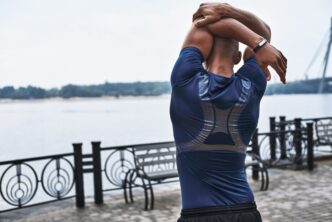A Quick Takeaway
The Story Behind the Trend
How to Make It Work for You
The Community View
Preparing your body specifically for a beach run in a vibrant locale like Miami Beach is essential for anyone looking to enjoy the unique challenge and beauty of running on sand. This specialized training focuses on strengthening the stabilizing muscles, improving cardiovascular endurance, and enhancing mobility to prevent injury and optimize performance on an unstable surface, ensuring that your experience is both exhilarating and safe. By incorporating targeted workouts and mindful preparation, runners can transform the demanding nature of sand running into a rewarding and invigorating part of their fitness journey.
Understanding the Unique Demands of Beach Running
Running on sand presents a distinct set of physical challenges compared to pavement or track running. The unstable, yielding surface requires significantly more energy expenditure, often up to 1.6 times more, as your feet sink and push off. This increased effort places greater demands on your lower body muscles, particularly the calves, glutes, hamstrings, and the often-overlooked intrinsic foot muscles.
Beyond the muscular effort, the uneven terrain tests your balance and proprioception, the body’s sense of its position in space. This constant micro-adjustment engages your core stabilizers more intensely, contributing to overall strength but also increasing the risk of strains if your body isn’t adequately prepared. However, these challenges also offer unique benefits, including reduced impact on joints and enhanced strength building across the entire kinetic chain.
Foundational Pillars for Beach Run Readiness
To truly conquer the Miami Beach sand, your training regimen should address several key areas: targeted strength, robust cardiovascular endurance, and superior mobility and stability. Neglecting any of these pillars can lead to discomfort, injury, or simply a less enjoyable run. A holistic approach ensures your body is resilient and adaptable.
Furthermore, considering Miami’s climate, acclimatization to heat and humidity is a critical, often overlooked, aspect of preparation. Hydration and electrolyte balance become paramount, even for shorter runs. Integrating these elements into your routine will lay a solid foundation for your beach running adventures.
Targeted Strength Training for Sand
Building specific strength is paramount for navigating the soft, shifting sands of Miami Beach. Focusing on the muscles that work hardest to stabilize and propel you will make a noticeable difference in your performance and recovery.
Lower Body Power and Stability
Exercises that build power and stability in your legs and glutes are non-negotiable. Squats and lunges (forward, reverse, and lateral) are excellent for developing quad and glute strength, mimicking the push-off motion on sand. Incorporate calf raises to build endurance in your lower legs, which will be heavily engaged. Glute bridges and hip thrusts are fantastic for isolating and strengthening the glutes, crucial for powerful propulsion.
Single-leg exercises, such as single-leg deadlifts and pistol squats (or assisted versions), are particularly beneficial. They challenge balance and strengthen the stabilizing muscles around the ankle, knee, and hip, directly translating to better control on an uneven surface. Aim for 2-3 sessions per week, with a mix of heavy and lighter, higher-repetition sets.
Core Engagement and Control
A strong core acts as the central stabilizer for your entire body, preventing excessive twisting and maintaining efficient running form on unstable ground. Include exercises like planks (front, side, and variations), Russian twists, and bird-dog to build comprehensive core strength. These movements help you maintain an upright posture and absorb the varied impacts of sand running.
Beyond static holds, incorporate dynamic core work that involves rotation and anti-rotation. Cable chops or resistance band rotations can mimic the rotational forces experienced during running, preparing your core to resist unwanted movement and transfer energy efficiently.
Ankle and Foot Strength
The small muscles in your feet and ankles are heroes when running on sand, working overtime to maintain stability. Exercises like toe raises, ankle circles, and picking up marbles with your toes can strengthen these often-neglected areas. Practicing single-leg balance on an unstable surface, like a cushion or balance board, further enhances proprioception and ankle stability. This dedicated focus can significantly reduce the risk of sprains and strains.
Cardiovascular Endurance and Adaptations
While strength is key, your cardiovascular system must also be primed for the increased effort of beach running. Building a robust aerobic base and incorporating specific intensity work will ensure you have the stamina to enjoy your run.
Interval Training
To simulate the bursts of effort required on sand, integrate interval training into your routine. This could involve alternating between periods of high-intensity running and recovery. For example, run for 1 minute at a challenging pace, then walk or jog for 2 minutes, repeating for 20-30 minutes. You can perform these on a treadmill with an incline to mimic the resistance, or on a track.
Consider adding short, sharp hill sprints or stair repeats to build explosive power and cardiovascular resilience. These workouts will help your body adapt to the higher energy demands of running on an uneven, yielding surface, improving your ability to surge and maintain pace.
Aerobic Base Building
Don’t neglect your longer, slower runs. These are crucial for building your aerobic base, which provides the foundation for all other running. Aim for at least one longer run each week, gradually increasing your distance. While not always on sand, these runs improve your body’s efficiency at utilizing oxygen and fat for fuel, essential for sustained effort.
Cross-Training Benefits
Incorporate cross-training activities like swimming, cycling, or elliptical training. These low-impact options build cardiovascular fitness without adding extra stress to your joints, allowing for active recovery and reducing the risk of overuse injuries. Swimming, in particular, can be excellent for core strength and overall endurance, making it a perfect complement to beach running preparation.
Mobility, Stability, and Injury Prevention
Optimal movement patterns and joint health are critical for both performance and injury prevention on the beach.
Dynamic Warm-up and Cool-down
Always begin your runs with a dynamic warm-up to prepare your muscles and joints for activity. Include movements like leg swings, torso twists, high knees, and butt kicks. After your run, dedicate time to a static cool-down, holding stretches for major muscle groups, especially hamstrings, quads, calves, and hip flexors. Foam rolling can also be highly beneficial for releasing tension and improving tissue quality.
Balance and Proprioception Drills
Regularly practice exercises that challenge your balance and proprioception. Standing on one leg while brushing your teeth, doing single-leg squats, or using a wobble board can significantly improve your body’s ability to react to unstable surfaces. These drills enhance the communication between your brain and muscles, leading to quicker and more effective adjustments on the sand.
Practical Tips for Your Miami Beach Run
Even with excellent physical preparation, a few practical considerations will enhance your actual beach running experience.
Start Short and Slow
When you first hit the sand, resist the urge to go all out. Start with shorter distances and a slower pace than you typically maintain on firm ground. Gradually increase your mileage and speed as your body adapts to the new demands. This progressive approach minimizes the risk of injury and allows for a more enjoyable transition.
Choose Your Sand Wisely
Miami Beach offers a variety of sand conditions. The hard-packed sand closer to the water’s edge provides a firmer, more stable surface, ideal for beginners or longer runs. As you move away from the water, the sand becomes softer and deeper, requiring more effort. Varying your running surface between these conditions can offer a dynamic workout and further strengthen different muscle groups.
Footwear Considerations
Deciding between running barefoot or with shoes on the beach depends on your experience and the sand conditions. Barefoot running can strengthen foot muscles and improve proprioception, but it requires careful attention to foot strike and potential debris. If running barefoot, start with very short distances. Shoes offer protection and support, especially on harder sand or if you have specific foot needs. Lightweight, breathable shoes are often preferred.
Hydration and Sun Protection
Miami’s sun and humidity are no joke. Prioritize hydration before, during, and after your run. Carry water or plan your route near water stations. Apply a high-SPF, water-resistant sunscreen generously and wear a hat and sunglasses to protect yourself from the intense UV rays. Running during the cooler parts of the day, early morning or late afternoon, is also highly recommended.
Your Miami Beach Running Adventure Awaits
Getting “Beach Run Ready” for Miami Beach is an investment in both your physical well-being and the enjoyment of a truly unique running experience. By dedicating time to targeted strength, cardiovascular endurance, and mobility, coupled with smart on-sand strategies, you’ll not only navigate the challenging terrain with ease but also build a more resilient and capable body. Embrace the preparation, soak in the vibrant atmosphere, and let the rhythm of the waves propel you forward on your unforgettable Miami Beach run.








